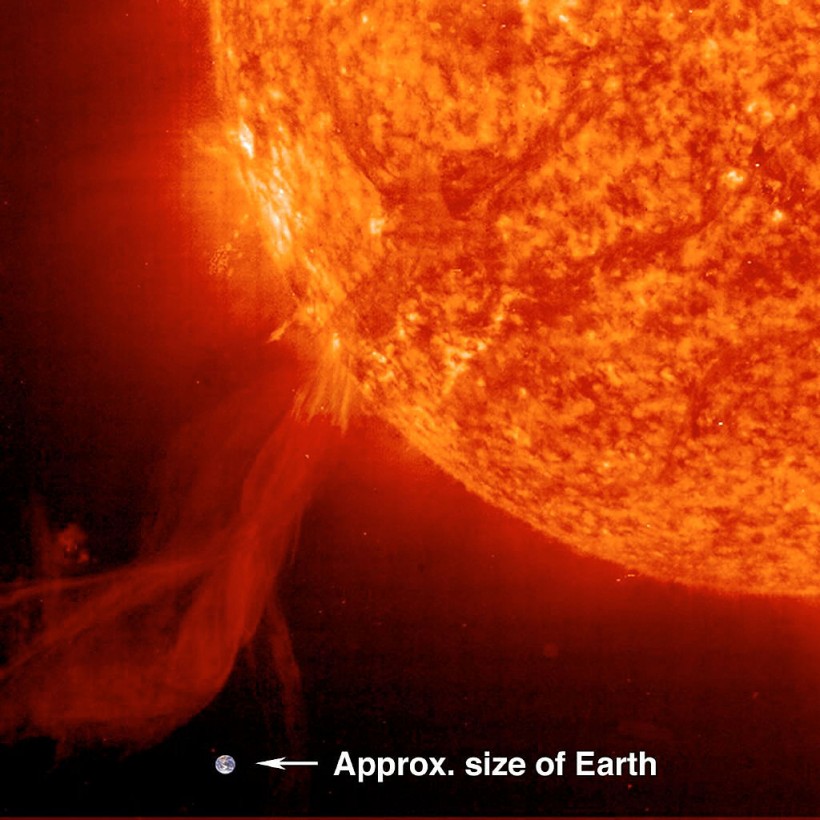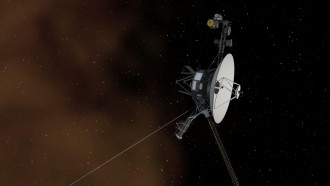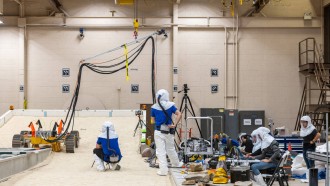International Telecommunication Satellite Organization's (Intelsat) transmission services have recently been taken down by a strong geomagnetic storm that ejected solar shock waves.
After a breakdown on August 19, Intelsat is attempting to regain control of the Galaxy 15 broadcast satellite, according to a report bySpace.news.

FILE IMAGE - OCTOBER 25: Astronomers at the Solar & Heliospheric Observatory (SOHO) captured this image of a solar prominence erupting from the surface of the Sun on October 25, 2002. Two large prominences were spotted and one is shown here with the Earth in scale to demonstrate the immense size of this solar phenomenon.
Knocking Down Galaxy 15
According to Intelsat, intense space weather activity most likely destroyed onboard electronics required to maintain the satellite's position in its geostationary orbit at 133 degrees West and enable communication with it.
"The satellite is otherwise operating nominally, keeping Earth pointing with all payload operations nominal," Intelsat spokesperson Melissa Longo said in a statement.
Galaxy 15 customers are being transferred to other satellites by the corporation, which will continue to try to recover command once they are off, so the company eventually deorbit the satellites, according to the spokesperson.
The satellite that was knocked off by thesolar stormis Galaxy 15, which is a geostationary orbit with a 133-degree west inclination that is responsible for sending news to the Americas.
Launched in 2005, the satellite was made by Orbital Sciences Corporation, and Northrop Grumman later acquired the business.
Read also:A Solar Storm Will 'Directly Hit' The Earth and Cause Signal Disruptions - Expert Says
Sun Awakening
The Space Weather Prediction Center (SWPC) of NOAA also cautioned on August 8 that the relatively stable space weather conditions of recent years are "coming to an end."
While most geomagnetic storms are not that dangerous, strong storms have the potential to destroy radio transmission, power lines, internet infrastructure, and several satellites.
Stunning auroras may be seen all over the world as a result of the storm's powerful shock waves.
The abundance of massive solar flares and coronal mass ejections (CMEs) in 2022 suggests that the sun is awakening from a more dormant phase of its 11-year cycle of activity.
The large solar stormCarrington Eventraged the space back in September 1859, a few months before the solar maximum took place in 1860.
In March of 2021, we went through a G3 storm, which is a fairly typical storm. However, even a G2 can do a lot of harm.SpaceXproved this in February when it lost 40 satellites after a solar storm.
According to astudy, there is an annual average 4% probability of a major solar storm and a 0.7 percent chance of another Carrington event.
However, according to the experts, a super-storm could occur more frequently than we believed, indicating that it could occur at any time.
According to NOAA, the largest CME can have billions of tonnes of solar material and can be blasted out from the sun up to 3,000 km per second.
NOAAmade a standard of geomagnetic storms on a scale from G1, which can increase auroral activity and cause minor disruptions to power supplies, up to G5, where massive storms like the Carrington event occur.
Read also:China is Developing The 'World's Largest Array of Telescopes' To Closely Study The Sun's Explosions
This article is owned by Tech Times
Written by Joaquin Victor Tacla










![[Esports] Best Online Games for Kids in 2023](https://1734811051.rsc.cdn77.org/data/thumbs/full/426134/295/166/50/40/esports-best-online-games-for-kids-in-2023.jpg)

